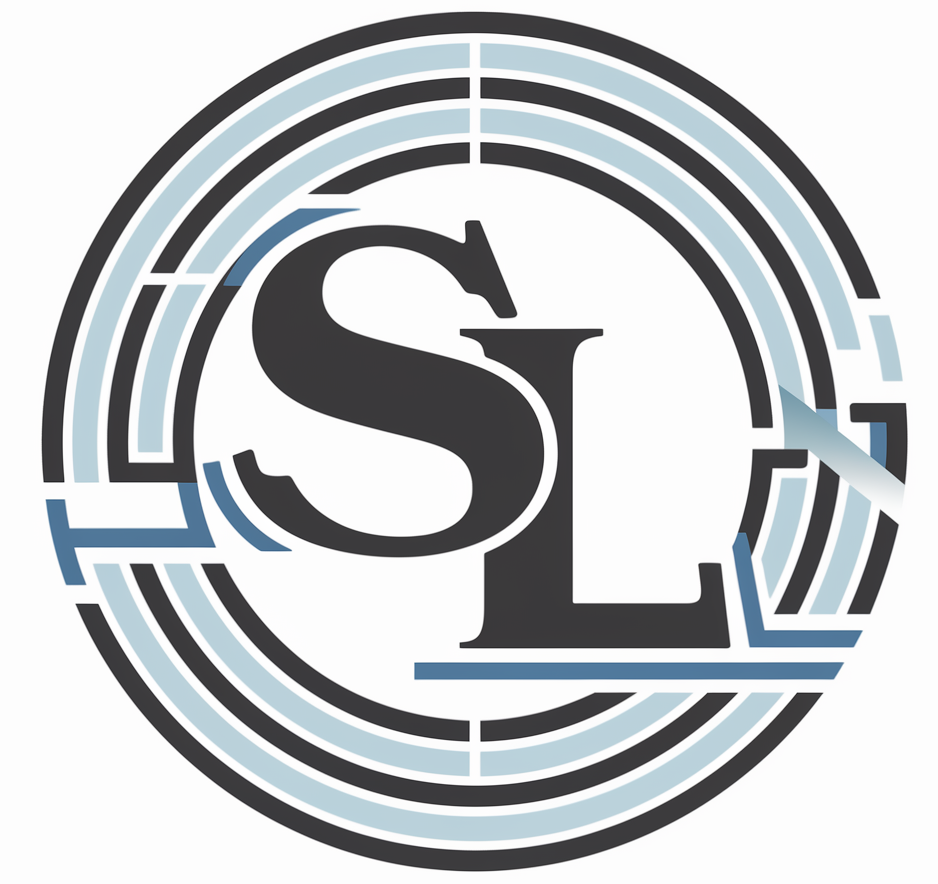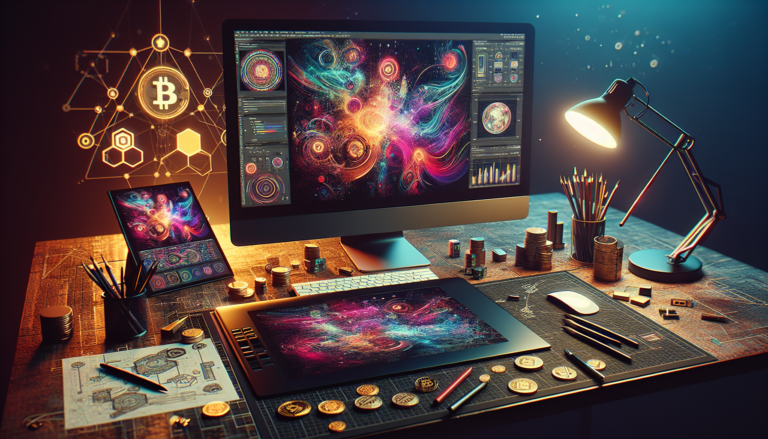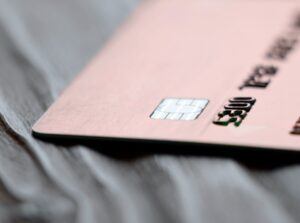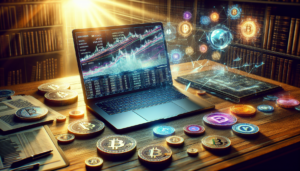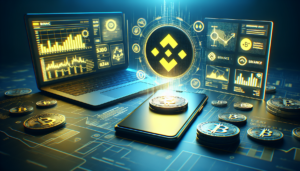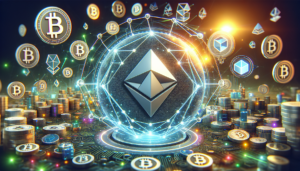Introduction to NFTs and Minting
The world of digital assets has been revolutionized by the emergence of non-fungible tokens, or NFTs. These unique digital assets have captured the attention of artists, collectors, and investors alike. But what does it actually mean to mint an NFT? In this article, we’ll dive into the concept of NFTs and explore the process of minting these digital assets.
What is an NFT?
NFTs, or non-fungible tokens, are unique digital assets that are verified using blockchain technology. Unlike cryptocurrencies such as Bitcoin, which are interchangeable, each NFT is one-of-a-kind and cannot be exchanged for another on a one-to-one basis. NFTs can represent a wide range of digital items, including:
- Artwork
- Music
- Videos
- Virtual real estate
- In-game items
- Collectibles
The uniqueness and provenance of NFTs are what give them their value. When you own an NFT, you have proof of ownership of that specific digital asset, even if others can view or copy it.
Understanding Minting
Minting an NFT is the process of creating a new, unique token on a blockchain. This token serves as a representation of ownership for a particular digital or real-world asset. When an NFT is minted, it is assigned a unique identifier and becomes part of the blockchain’s immutable record.
The NFT minting process involves several steps, which we will explore in more detail later in this article. In essence, minting an NFT requires:
- Creating the digital asset
- Choosing a blockchain platform
- Setting up a crypto wallet
- Funding the wallet
- Uploading the asset and creating the NFT
The NFT Minting Process
Now that we have a basic understanding of NFTs and minting, let’s take a closer look at the steps involved in minting an NFT.
Requirements for Minting an NFT
Before you can begin the minting process, you’ll need to have a few things in place:
1. Digital asset creation: You’ll need to create or obtain the digital asset you want to mint as an NFT. This could be an image, video, audio file, or any other digital content.
2. Crypto wallet: A cryptocurrency wallet is necessary to interact with the blockchain and store your NFTs. Popular options include MetaMask, Trust Wallet, and Coinbase Wallet.
3. Funds: Minting an NFT requires payment of transaction fees, known as gas fees, in the blockchain’s native cryptocurrency. Make sure your wallet is funded with enough crypto to cover these costs.
Step-by-Step Guide to Minting
Once you have your digital asset, wallet, and funds ready, you can begin the NFT minting process:
1. Choose a blockchain platform that supports NFTs, such as Ethereum, Tezos, or Binance Smart Chain.
2. Connect your crypto wallet to the chosen platform.
3. Upload your digital asset to the platform.
4. Set a name, description, and any additional properties for your NFT.
5. Choose the pricing and distribution method, such as a fixed price or auction.
6. Confirm the transaction and pay the associated gas fees.
7. Once the transaction is processed, your NFT will be minted and appear in your wallet.
The entire process can take anywhere from a few minutes to several hours, depending on network congestion and the complexity of your NFT.
Costs Involved in Minting
Minting an NFT comes with associated costs, primarily in the form of gas fees. These fees are paid to the blockchain network to process and validate your transaction. The cost of gas fees can vary significantly based on network demand and the price of the blockchain’s native cryptocurrency.
In addition to gas fees, some NFT marketplaces may charge additional fees, such as:
- Listing fees
- Commission on sales
- Royalty fees for creators
It’s essential to factor in these minting costs when planning your NFT project to ensure profitability and sustainability.
Choosing the Right Blockchain for Minting
When it comes to minting an NFT, choosing the right blockchain platform is crucial. While Ethereum is currently the most popular choice, several other blockchains have emerged as viable alternatives.
Popular Blockchains for NFT Minting
Some of the most widely used blockchains for NFT minting include:
1. Ethereum blockchain: The pioneer in NFT development, Ethereum offers a robust ecosystem and the widely-used ERC-721 token standard.
2. Tezos: Known for its energy-efficient proof-of-stake consensus mechanism, Tezos has gained traction in the NFT space.
3. Avalanche: Avalanche boasts high transaction speeds and low fees, making it an attractive option for NFT creators.
4. Flow: Developed by Dapper Labs, the team behind CryptoKitties, Flow is designed specifically for NFTs and has partnerships with major brands like NBA Top Shot.
Factors to Consider When Choosing a Blockchain
When selecting a blockchain for your NFT project, consider the following factors:
1. Transaction speed: Look for a blockchain that can process transactions quickly to ensure a smooth user experience.
2. Fees: Compare the gas fees and other associated costs across different blockchains to find the most cost-effective option.
3. Security: Ensure the chosen blockchain has a proven track record of security and has measures in place to protect against hacks and fraudulent activities.
4. Ecosystem: Consider the size and activity of the blockchain’s community, as well as the availability of marketplaces, wallets, and other tools.
Using NFT Marketplaces
NFT marketplaces play a vital role in the minting and trading of NFTs. These platforms provide a user-friendly interface for creators to mint their NFTs and for buyers to discover and purchase them.
Overview of Popular NFT Marketplaces
Some of the most popular NFT marketplaces include:
1. OpenSea: The largest and most well-known NFT marketplace, OpenSea supports a wide range of NFTs across multiple blockchains.
2. Rarible: A community-governed marketplace that allows users to mint, buy, and sell NFTs.
3. Nifty Gateway: A curated platform that focuses on high-quality NFT drops from established artists and brands.
4. SuperRare: A marketplace that emphasizes unique, single-edition digital artworks.
How Marketplaces Simplify the Minting Process
NFT marketplaces streamline the minting process by providing a user-friendly interface that doesn’t require extensive technical knowledge. Here’s how they simplify minting an NFT:
1. Connect your wallet: Marketplaces offer a simple way to connect your crypto wallet, such as MetaMask, to their platform.
2. Upload your asset: You can easily upload your digital asset, such as an image or video, to the marketplace.
3. Set properties: Marketplaces provide fields for you to input your NFT’s name, description, and other relevant properties.
4. Price and mint: You can set your desired price or choose an auction format, then initiate the minting process with a few clicks.
By handling the technical aspects of interacting with the blockchain, NFT marketplaces make it easier for creators to focus on their art and reach a wider audience.
Advanced Minting Concepts
As the NFT ecosystem evolves, several advanced concepts have emerged that creators and collectors should be aware of.
Role of Smart Contracts in Minting
Smart contracts are self-executing programs that run on the blockchain and define the rules and conditions for NFT ownership and transfer. When minting an NFT, a smart contract is deployed to the blockchain, which:
1. Assigns a unique token ID to the NFT
2. Associates the NFT with its metadata (e.g., name, description, image)
3. Specifies the owner of the NFT
4. Defines any additional rules, such as royalty percentages for the creator
Smart contracts ensure the integrity and immutability of NFTs, making them a crucial component of the NFT minting process.
Understanding the ERC-721 Standard
ERC-721 is the most widely-used token standard for creating unique NFTs on the Ethereum blockchain. This standard defines a set of rules and functions that NFTs must adhere to, including:
1. `ownerOf`: A function that returns the owner of a specific token ID
2. `transferFrom`: A function that transfers ownership of an NFT from one address to another
3. `approve`: A function that grants permission for another address to transfer an NFT
By following the ERC-721 standard, NFTs created on Ethereum are interoperable across different marketplaces and wallets, ensuring a seamless user experience.
Whitelisting and Early Access
Whitelisting is a process that allows early supporters or community members to mint NFTs before the public launch. This strategy is often used to:
1. Reward loyal followers and early adopters
2. Create buzz and anticipation for the NFT drop
3. Raise funds to support the project’s development
To participate in a whitelist, users typically need to complete certain tasks, such as following the project on social media, joining a Discord server, or holding a specific cryptocurrency.
Whitelisting and early access can be powerful tools for building a strong community around your NFT project and ensuring a successful launch.
Monetizing and Investing in NFTs
NFTs have opened up new opportunities for creators to monetize their work and for investors to participate in the growth of the digital asset market.
How Artists Can Monetize Their Work
Artists can leverage NFTs to monetize their digital creations in several ways:
1. One-time sales: Creators can mint their artwork as a single-edition NFT and sell it to the highest bidder.
2. Limited editions: Artists can create multiple copies of their work, each with its own unique token ID, and sell them at a fixed price.
3. Royalties: NFT smart contracts can be programmed to automatically pay a percentage of each resale back to the original creator, providing a passive income stream.
4. Bundling with physical items: Some artists offer physical merchandise or experiences alongside their NFTs, increasing their value proposition.
By minting their work as NFTs, artists can reach a global audience, maintain control over their intellectual property, and potentially earn more than through traditional sales channels.
Investment Opportunities with NFTs
NFTs have also caught the attention of investors looking to diversify their portfolios and capitalize on the growth of the digital asset market. Some investment opportunities in the NFT space include:
1. Collectibles: Investors can purchase rare or sought-after NFTs, such as CryptoPunks or Bored Ape Yacht Club, with the hope of their value appreciating over time.
2. Fractional ownership: Some platforms allow users to buy shares of high-value NFTs, lowering the barrier to entry for investors.
3. NFT funds: Professional investment funds that focus on acquiring and managing a portfolio of promising NFTs.
4. Tokenizing real-world assets: NFTs can represent ownership of real-world assets, such as real estate or art, providing investors with exposure to these markets in a more liquid and accessible format.
As with any investment, it’s crucial to conduct thorough research, understand the risks involved, and invest responsibly.
Risks and Considerations
While the NFT market offers exciting opportunities, it’s essential to be aware of the potential risks and challenges involved.
Understanding Market Risks
The NFT market is still relatively new and highly speculative, which means that prices can be volatile and subject to sudden changes based on market sentiment. Some risks to consider include:
1. Hype-driven prices: Some NFTs may be overvalued due to temporary hype or speculation, leading to potential losses if the market cools off.
2. Liquidity: Depending on the platform and the specific NFT, it may be difficult to find buyers or sell your NFTs quickly, especially for niche or less popular items.
3. Fraud and scams: As with any emerging market, there are risks of fraudulent projects, counterfeit NFTs, and scams designed to exploit unsuspecting buyers.
Setting Realistic Expectations
Given the highly competitive and fast-moving nature of the NFT market, it’s essential to approach NFT investing and minting with realistic expectations. Some points to keep in mind:
1. Not every NFT will be a success: While some NFTs may generate significant returns, many others may not find buyers or appreciate in value.
2. Building a community takes time: For creators, establishing a strong community around your NFT project requires consistent effort and engagement.
3. Market trends can change quickly: What’s popular today may not be in demand tomorrow, so it’s important to stay informed and adapt to changing market conditions.
By understanding these risks and challenges, you can make more informed decisions when engaging with the NFT market.
Conclusion
Minting an NFT is an exciting way to create, own, and trade unique digital assets. As we’ve explored in this article, the process involves creating a digital asset, choosing a blockchain platform, and leveraging smart contracts to ensure the uniqueness and ownership of the NFT.
By understanding the key concepts, such as gas fees, token standards, and the role of marketplaces, you can navigate the NFT minting process with greater confidence. Whether you’re an artist looking to monetize your work or an investor seeking new opportunities, the NFT space offers a wealth of possibilities.
However, it’s crucial to approach NFTs with a clear understanding of the risks and challenges involved. By conducting thorough research, setting realistic expectations, and staying informed about market trends, you can make the most of the exciting world of NFTs while minimizing potential downsides.
As the NFT ecosystem continues to evolve, we can expect to see new innovations, use cases, and opportunities emerge. By staying engaged and adaptable, you can position yourself to thrive in this dynamic and transformative space.
See also:
